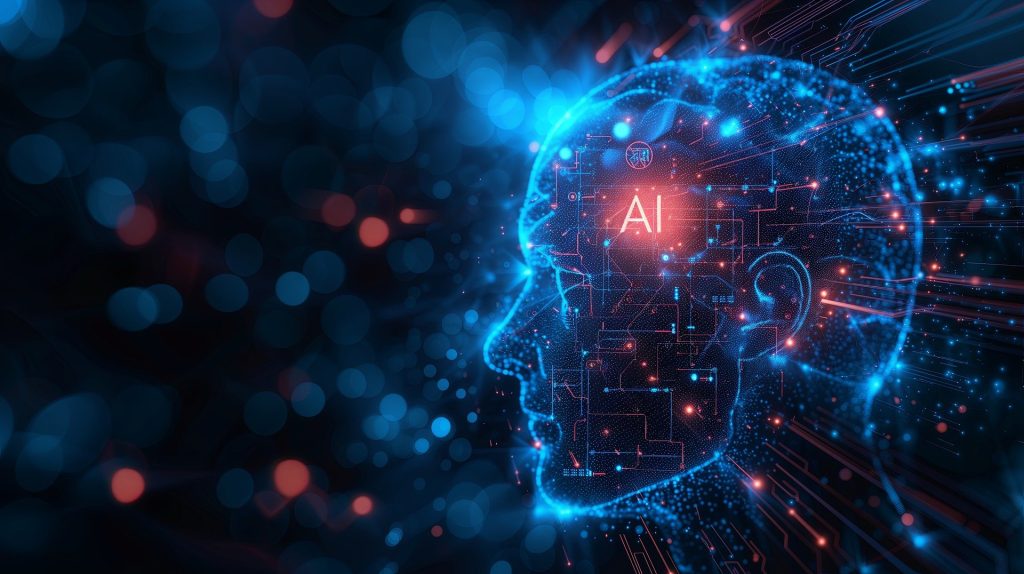In recent years, the intersection of artificial intelligence and healthcare has sparked a myriad of innovations, one of the most provocative being the AI-powered ‘Death Clock.’ This tool, which estimates an individual’s life expectancy based on a variety of personal and health-related data, has generated significant interest and debate. The concept of a ‘Death Clock’ is not entirely new; it has been a subject of fascination in popular culture and philosophical discussions for decades. However, the advent of sophisticated AI algorithms has transformed this idea from a mere curiosity into a potentially powerful tool for individuals and healthcare providers alike.
The ‘Death Clock’ operates by analyzing a multitude of factors, including age, gender, lifestyle choices, medical history, and even genetic predispositions. By leveraging vast datasets and machine learning techniques, it aims to provide users with a personalized estimate of their remaining years. While some may view this as a morbid or unsettling application of technology, proponents argue that it can empower individuals to make informed decisions about their health and future.
As society grapples with the implications of such predictive tools, it becomes essential to explore the mechanics behind the ‘Death Clock,’ its potential benefits, ethical considerations, and its broader impact on healthcare.
Key Takeaways
- The AI-Powered ‘Death Clock’ is a new technology that uses artificial intelligence to predict an individual’s time of death.
- The AI technology works by analyzing various factors such as medical history, lifestyle, and genetic information to make predictions about life expectancy.
- Potential benefits of using the ‘Death Clock’ include early detection of health risks, personalized healthcare planning, and improved end-of-life decision making.
- Ethical considerations and concerns surrounding the ‘Death Clock’ include privacy issues, potential misuse of predictions, and psychological impact on individuals.
- The accuracy and reliability of the predictions made by the ‘Death Clock’ are still under scrutiny, with experts questioning the validity of the AI algorithms used.
How the AI technology works
At the core of the AI-powered ‘Death Clock’ lies advanced machine learning algorithms that process extensive datasets to identify patterns and correlations related to mortality. These algorithms are trained on historical data that includes demographic information, health records, lifestyle choices, and even social determinants of health. By employing techniques such as regression analysis and neural networks, the AI can discern which factors are most predictive of life expectancy.
For instance, the model might analyze data from thousands of individuals who share similar characteristics—such as age, gender, and health conditions—to determine how these variables influence longevity. The AI can then generate a life expectancy estimate by applying this learned knowledge to new users. This process is not merely about crunching numbers; it involves complex statistical modeling that accounts for interactions between various factors.
For example, the impact of smoking on life expectancy may differ significantly between individuals with pre-existing health conditions compared to those who are otherwise healthy.
The potential benefits of using the ‘Death Clock’

The potential benefits of utilizing an AI-powered ‘Death Clock’ are manifold. One of the most significant advantages is its ability to facilitate proactive health management. By providing individuals with an estimate of their life expectancy, the tool encourages users to engage in healthier lifestyle choices.
For example, someone who learns they have a shorter projected lifespan may be motivated to quit smoking, adopt a healthier diet, or increase physical activity levels. This proactive approach can lead to improved overall health outcomes and potentially extend life expectancy. Moreover, the ‘Death Clock’ can serve as a valuable resource for healthcare providers.
By integrating this tool into patient care, doctors can tailor their recommendations based on individual life expectancy estimates. This personalized approach allows for more effective end-of-life planning and resource allocation. For instance, patients with limited life expectancy may benefit from palliative care options that focus on quality of life rather than aggressive treatments that may not yield significant benefits.
In this way, the ‘Death Clock’ can enhance communication between patients and healthcare providers, fostering discussions about preferences and priorities as individuals approach the later stages of life.
Ethical considerations and concerns
Despite its potential benefits, the AI-powered ‘Death Clock’ raises several ethical considerations that warrant careful examination. One primary concern is the psychological impact of receiving a mortality prediction. For many individuals, learning about a potentially limited lifespan can lead to anxiety, depression, or existential distress.
The emotional burden associated with such knowledge may outweigh any potential benefits derived from proactive health management. It is crucial for developers and healthcare providers to consider how best to present this information in a sensitive manner that prioritizes mental well-being. Additionally, there are concerns regarding data privacy and security.
The algorithms that power the ‘Death Clock’ rely on extensive personal data, raising questions about how this information is collected, stored, and used. Individuals may be hesitant to share sensitive health information if they fear it could be misused or inadequately protected. Ensuring robust data security measures and transparent data usage policies will be essential in building trust among users.
Furthermore, there is a risk that such predictive tools could inadvertently reinforce existing health disparities if access to the technology is not equitable across different populations.
Accuracy and reliability of the predictions
The accuracy and reliability of predictions generated by the AI-powered ‘Death Clock’ are critical factors that influence its acceptance and utility. While machine learning algorithms can analyze vast amounts of data to identify trends, predicting an individual’s lifespan is inherently complex due to the multitude of variables involved. Factors such as unforeseen accidents, sudden illnesses, or changes in lifestyle can significantly alter life expectancy in ways that are difficult to quantify.
To enhance reliability, developers must continuously refine their models by incorporating new data and adjusting for emerging health trends. For instance, as public health initiatives evolve or new medical treatments become available, these changes should be reflected in the algorithms to ensure they remain relevant and accurate. Additionally, transparency regarding the limitations of the predictions is vital; users should be made aware that these estimates are probabilistic rather than deterministic.
By setting realistic expectations about what the ‘Death Clock’ can provide, developers can mitigate potential disappointment or mistrust among users.
The impact on healthcare and end-of-life planning

The integration of an AI-powered ‘Death Clock’ into healthcare systems has the potential to transform end-of-life planning significantly. By providing individuals with insights into their projected lifespan, healthcare providers can facilitate more meaningful conversations about advanced care planning and preferences for end-of-life care. This proactive approach allows patients to articulate their wishes regarding treatment options, hospice care, and other critical decisions well before they reach a crisis point.
Moreover, the ‘Death Clock’ can assist in resource allocation within healthcare systems. By identifying patients with limited life expectancies who may benefit from palliative care services or hospice support, providers can ensure that resources are directed toward those who need them most. This targeted approach not only enhances patient care but also optimizes healthcare spending by reducing unnecessary interventions for individuals who may not benefit from aggressive treatments.
Public reception and controversy surrounding the ‘Death Clock’
The public reception of the AI-powered ‘Death Clock’ has been mixed, reflecting a spectrum of opinions ranging from intrigue to skepticism. Some individuals view it as an innovative tool that empowers them to take control of their health and make informed decisions about their future. They appreciate the potential for increased awareness regarding lifestyle choices and their impact on longevity.
Conversely, others express concern over the implications of such technology on mental health and societal attitudes toward aging and mortality. Controversy also arises from discussions about who should have access to this technology and how it should be utilized within healthcare settings. Critics argue that without proper regulation and oversight, there is a risk that insurance companies or employers could misuse mortality predictions to discriminate against individuals based on their projected lifespan.
This concern highlights the need for clear ethical guidelines governing the use of AI in healthcare contexts to prevent potential abuses.
The future of AI in predicting mortality
As technology continues to advance at an unprecedented pace, the future of AI in predicting mortality holds both promise and challenges. Ongoing research will likely lead to more sophisticated algorithms capable of incorporating an even broader range of variables into life expectancy predictions. For instance, emerging fields such as genomics may provide deeper insights into genetic predispositions that influence longevity, allowing for more personalized assessments.
Furthermore, as societal attitudes toward aging evolve, there may be greater acceptance of tools like the ‘Death Clock’ as part of holistic health management strategies. The integration of AI into routine healthcare practices could foster a culture where discussions about mortality are normalized rather than stigmatized. However, this future will require careful navigation of ethical considerations and public concerns to ensure that such technologies are used responsibly and equitably.
In conclusion, while the AI-powered ‘Death Clock’ presents exciting possibilities for enhancing individual health management and improving end-of-life planning, it also necessitates thoughtful consideration of its ethical implications and societal impact. As we move forward into an era where AI plays an increasingly prominent role in healthcare decision-making, ongoing dialogue among stakeholders will be essential in shaping a future where technology serves humanity’s best interests.



